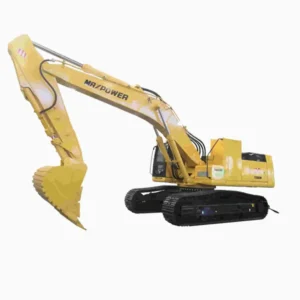Mini excavator hammer technology has been developing rapidly in the past few years, offering construction professionals more efficient and powerful tools for the job. We’ve seen new innovations in design, performance, and flexibility that have revolutionized the way we work. However, with these changes come new challenges and opportunities. To stay ahead of the competition, it’s important to keep an eye on the latest trends in mini excavator hammer technology. In this article, we’ll explore five of the top trends to watch that could shape the industry over the next few years.
The Top 5 Trends in mini excavator hammer

1. The Top 5 Trends in mini экскаватор hammer are:
2. Number one on the list is the increasing popularity of electric mini excavator hammers.
3. Another big trend is the rise in demand for cordless mini excavator hammers.
4. One more popular trend is the growing popularity of mini excavator hammers with GPS tracking capabilities.
5. And finally, another big trend in the mini excavator hammer industry is the increasing use of social media to promote products and services.
How the mini excavator hammer industry is changing

New technologies are emerging that are changing the way mini excavator hammers are manufactured, distributed, and used. Here are some of the most important trends to watch in the mini excavator hammer industry:
1. 3D Printing – 3D printing is becoming increasingly popular in the manufacturing of mini excavator hammers. This technology allows for more complex designs and faster production times.
2. Electric Motors – Electric motors are becoming more common in mini excavators due to their efficiency and environmental friendliness.
3. Battery Technology – Battery technology is improving rapidly, making electric-powered mini excavators a more viable option for many users.
4. Connectivity – Mini excavators are becoming more connected, with many models now featuring GPS, WiFi, and Bluetooth connectivity. This allows users to track their machine’s location and performance, as well as receive updates and information from the manufacturer.
What companies are leading the way in mini excavator hammer innovation
It is one of the most versatile tools in a construction worker’s arsenal. It is perfect for demolishing small areas, breaking up concrete, and driving nails into wood. The problem with traditional hammers is that they are often too large and unwieldy for use in tight spaces. This is where mini excavator hammers come in. These compact tools are designed for use in confined areas, and they pack a powerful punch.
What consumers can expect from mini excavator hammer products in the future
As the world of construction and landscaping evolves, so too do the tools that workers use to get the job done.
And Here are some of the top trends:
1. Increased power and performance. The mini excavators of tomorrow will be more powerful than ever before, making them capable of tackling even the most challenging projects.
2. Improved ergonomics. Thanks to advances in design and engineering, future mini excavators will be more comfortable and easier to operate than ever before.
3. Greater versatility. Today’s mini excavators are already versatile machines, but tomorrow’s models will offer even moreattachments and features that will make them even more versatile.
4. More compact designs. As space becomes increasingly limited on construction sites and in landscaping applications, manufacturers will continue to develop mini excavators with more compact designs without sacrificing power or performance.
5. Enhanced safety features. Safety is always a top priority for manufacturers, and tomorrow’s mini excavators will feature a variety of enhanced safety features to keep operators safe while they work.
Заключение
The mini excavator hammer industry is constantly evolving and it can be difficult to keep up with the latest trends. We have provided you with a list of 5 key trends that we think are worth watching in 2020. It will be interesting to see how these trends continue over the next few years and which ones become mainstream.






-150x150.webp)
